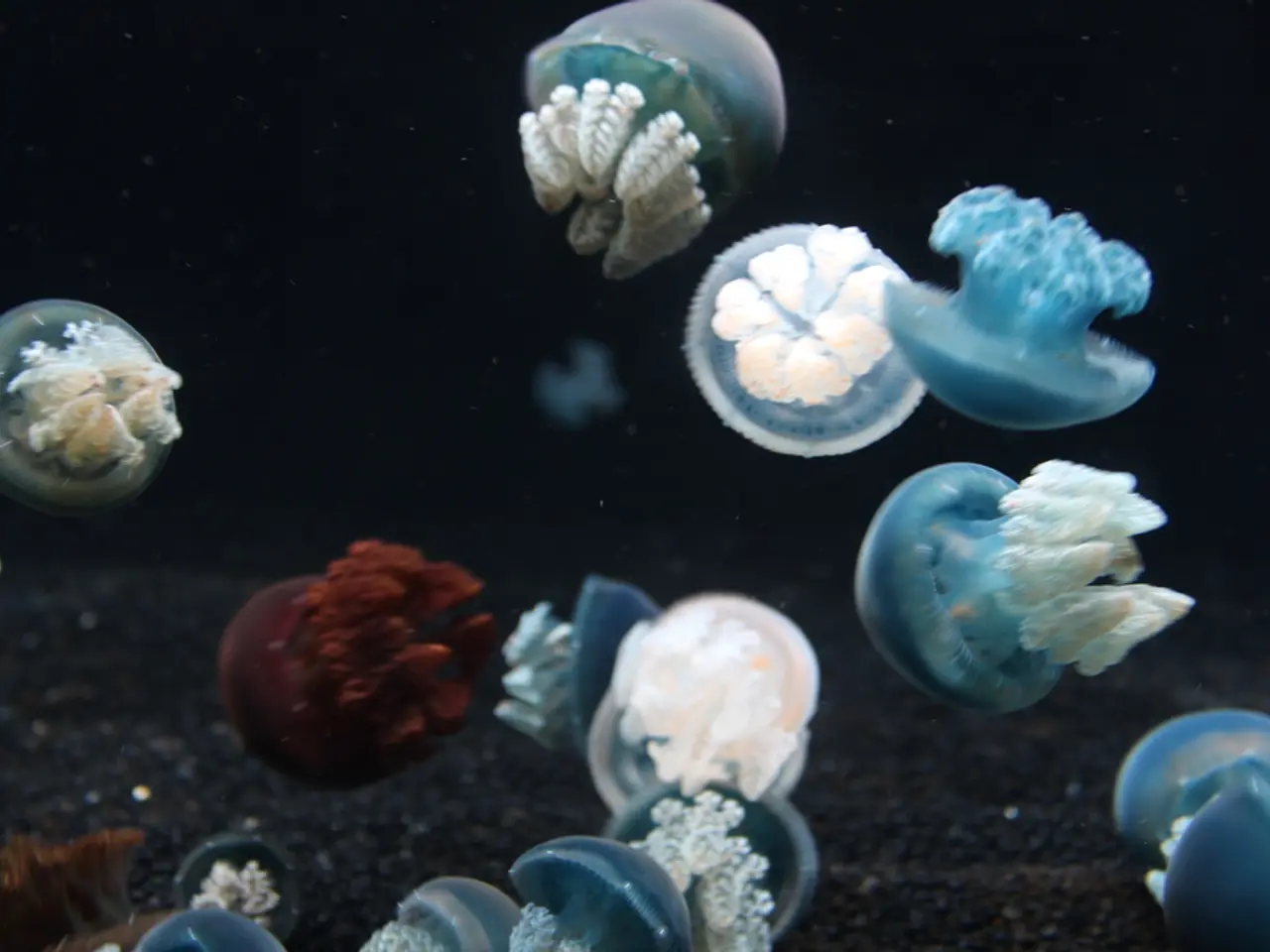A horde of jellyfish has temporarily halted one-tenth of France's nuclear power production.
In recent years, marine biology consultants like Derek Wright, working with the United States National Oceanic and Atmospheric Administration, have highlighted a concerning trend: jellyfish breed faster in warmer waters. This phenomenon, coupled with climate change and rising sea temperatures, has led to an increase in jellyfish clogging at nuclear power plants, posing a significant risk to their cooling water intake systems.
Researchers are currently investigating various approaches to address this issue. One promising avenue is the development of enhanced screening systems, which involve upgrading intake filters with finer mesh or specialized coatings to prevent jellyfish from penetrating pump inlets, while reducing the risk of clogging from jellyfish swarms.
Another approach under investigation is the implementation of automated cleaning and flushing mechanisms. These systems, which could be robotic or mechanical, would periodically clear jellyfish aggregations from screens without requiring shutdown, thus maintaining continuous cooling water flow.
Jellyfish detection and monitoring are also crucial in preventing clogging events. Researchers are using sensors, underwater cameras, and environmental monitoring to detect sudden blooms early, enabling preemptive operational measures such as adjusting intake flow or temporarily diverting water intake to avoid clogging events.
Environmental management and habitat modification are also being explored as potential solutions. By investigating whether managing local conditions (e.g., water flow, temperature, or plankton concentrations) around intake areas can reduce jellyfish aggregation near plants, researchers hope to find ways to mitigate these disruptions.
These efforts are a response to several severe incidents, such as the August 2025 shutdown at France’s Gravelines plant, where a massive swarm of jellyfish clogged cooling filters, leading to automatic reactor shutdowns. Although no single solution has been universally adopted yet, ongoing research combines engineering advances in intake infrastructure with ecological monitoring to mitigate these disruptions.
Overfishing, invasive jellyfish species, and the transport of jellyfish via ballast ships have also contributed to the issue. For instance, in 1999, a jellyfish surge in the Philippines caused a major blackout at a coal plant, while Israel, Japan, Florida, and California have faced similar problems with jellyfish affecting their power plants in the past two decades.
Some projects are even testing drones to detect approaching jellyfish swarms, giving operators time to adjust plant operations or deploy protective measures. Marine biologists have also observed that warmer waters in the North Sea have extended the breeding season for jellyfish.
Researchers at the University of Bristol are developing an "early warning tool" to predict jellyfish movements using observation data and ocean modelling. This tool, along with the ongoing research, offers hope for mitigating the impact of jellyfish on nuclear power plants and maintaining their crucial role in providing clean energy.
It is important to note that while these incidents can cause temporary reductions in a country's nuclear capacity, such as the 10% reduction at France's Gravelines plant due to the August 2025 shutdown, there was no damage to the reactors, no risk to workers or the public, and no significant disruption to the national grid.
As global temperatures continue to rise, coastal power plants will face more biological fouling, especially from jellyfish. However, with ongoing research and innovation, these threats can be managed, ensuring the continued operation of these vital energy sources.
- Derek Wright, a marine biology consultant, has brought attention to a troubling trend: jellyfish breeding at a faster rate in warmer waters, which is exacerbated by climate change and rising sea temperatures.
- Research is being conducted on multiple fronts, such as developing enhanced screening systems, implementing automated cleaning and flushing mechanisms, and monitoring jellyfish movements.
- The emerging solutions aim to prevent jellyfish from entering pump inlets, clear jellyfish aggregations regularly, and identify potential jellyfish blooms before they occur.
- Climate change and overfishing, as well as the transport of jellyfish via ballast ships, have contributed to the increasing number of jellyfish in coastal waters, posing a risk to power plants' cooling water intake systems.
- For instance, a jellyfish surge in the Philippines in 1999 caused a major blackout at a coal plant, while France's Gravelines plant experienced a shutdown due to jellyfish clogging in 2025.
- Researchers at the University of Bristol are creating an "early warning tool" that predicts jellyfish movements, offering hope to mitigate the impact of jellyfish on nuclear power plants and maintain their role in providing clean energy.




